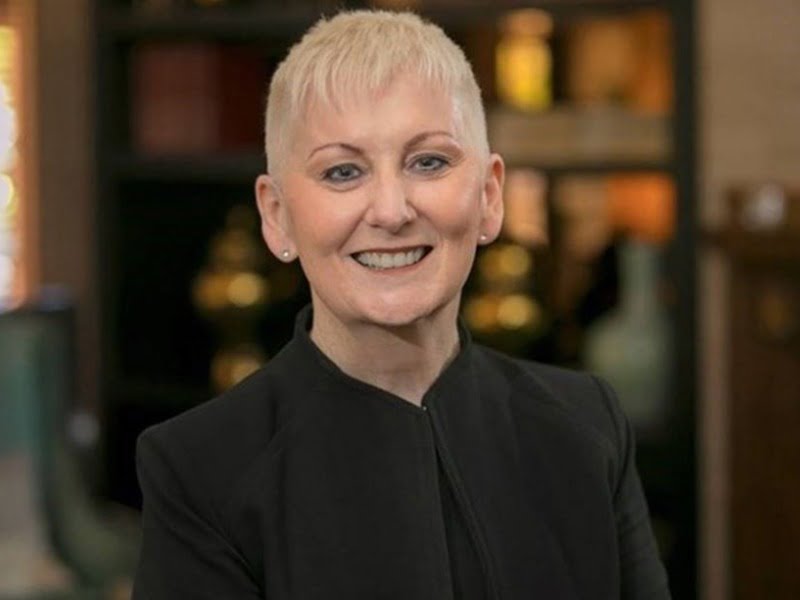More than 400 million people globally have it. 18 million people will die every year from it. By 2030, the estimated global costs is a staggering $1 trillion.
COVID-19? No, it’s cardiovascular (‘heart’) disease or CVD; and it’s been called a pandemic since at least the late 1990s.
The single biggest problem we face during the current COVID-19 crisis is that pandemics don’t exist in isolation.
It has been reported that people with non-infectious chronic diseases such as CVD (and others such as diabetes and cancers) will have far worse outcomes if they contract COVID-19.
Cardiovascular disease and COVID-19 are both pandemics, and these two pandemics are colliding.

How we are managing both and together is a public health issue: these can’t be managed in isolation because these don’t exist in isolation.
Impacting both pandemics – and every disease and condition not just COVID-19 and CVDs – is health illiteracy and poor accessibility. Health illiteracy is widespread throughout populations, and disproportionately impacts the disadvantaged.
In Australia, it is difficult to fathom that 60 per cent of people have less than adequate levels of health literacy, and according to HealthDirect Australia, this is a significant challenge in delivering health services.
People cannot understand basic health information and concepts, and have low numeracy skills, and yet health information is still written at college grade level and up to university level.
Why would we expect populations that are health illiterate, and unable to understand and apply cardiac health information, to now be able to understand and apply COVID-19 health information?
Notwithstanding the regular and widespread advertising campaigns and global and national efforts, the needle has not been moved on CVD health outcomes. And yet, we know that the risk of CVD can be reduced through lifestyle changes (quit smoking, diet, exercise and reduce stress) and taking certain prescribed medications.
The cocktail of widespread health illiteracy compounded by voluminous bureaucratically written health information, has utterly sabotaged people’s ability to comprehend and make the necessary lifestyle changes critical for managing (and avoiding) cardiovascular disease.
The impact of health illiteracy on CVD outcomes is catastrophic. According to the International Society for Vascular Health, ‘Vascular Health and Risk Management 2006‘.
“We will need to address the health literacy problem in order to make the next great advance in postponing cardiovascular disease”.
And what of the current COVID-19 pandemic, which might last for many months or even years? This is not likely to be the last infectious disease pandemic.
So far the urgency of the COVID-19 crisis has made the focus of strategies on avoidance and not on resilience. In the absence of a vaccine, the need for social distancing is now well established, together with enforceable policies of social isolation and quarantine.
Sadly, health compliance is always a problem. Harsh policies and penalties have been required to enforce COVID-19 avoidance practices. In the face of health illiteracy with a fast moving communicable disease, behavioural changes need to be enforced.
However, no such enforcement regime exists – or would be effective – to bring about the necessary lifestyle changes and medication adherence for CVD – and so “compliance” is very low.
The Victor Chang Cardiac Research Institute recently explained the impact of COVID-19 on the heart and the reasons why understanding social distancing and making lifestyle changes (such as quit smoking) are important.
So what we have is the dynamics between the decades long non-communicable CVD pandemic and the fast-moving communicable COVID-19 pandemic across health illiterate populations – and the impact on population resilience and servicing resilience.
So how do we bring about building long-term resilience into populations that are largely health illiterate and resilience into servicing models?
Is telehealth the answer?
It should be part of the solution, but it currently isn’t even close.
I have consistently presented on the need for digital disruption of health and social services to be seen as the “first humanitarian revolution” not the “fourth industrial revolution”.
The COVID-19 epidemic has panicked ill-prepared governments, who in my experience do not understand the impact of health illiteracy – and illiteracy in general – on the design of services.
Websites are overloaded with information that is not understandable by the health illiterate, is inconsistent across jurisdictions, and is largely text base with little in the way of explaining videos or images. The needs of people with disability are missing.
We are seeing governments and other organisations rushing to release apps, chatbots and virtual assistants that are largely inaccessible and spew incomprehensible text or talk at people in ‘tongues’. ‘Authoritative’ sources don’t make the information intelligible.
After COVID-19, will the cacophony of digital outpourings have addressed the underlying health illiteracy challenge?
The health illiteracy and accessibility challenge is deep and we must apply equally deep thinking, rigour and insights to overcome this in a sustainable way. This requires concerted, ongoing co-design.
Co-design takes time. It is connected to outcomes. Not a few chats with “users” but deep design shaped by the spectrum of human needs and the human experience, involving specialists across a range of domains of civil society: educators, psychologists, language experts, sociologists and cultural experts. This is not a one-size fits all doctrine.
Human agency does not come from technology. It is the visceral human ability, regardless of circumstances, for a person to be able to comprehend information and make decisions in their own context. Health illiteracy impacts human agency.
Co-design is evident by its absence in the current batch of COVID-19 telehealth offerings.
At a “system” level, the absence of co-design sees a failure to identify servicing interdependencies across these two pandemics.
Telehealth – Telephone or Omni-Channel
The Australian Government’s welcomed announcement COVID-19 Temporary MBS Telehealth Services must be catalyst for permanent, long-term strategic telehealth funded services.
In this period of crisis, these temporary measures are relying heavily on the telephone – a concept invented in 1876 – and in practices and pharmacies in Canberra and I suspect elsewhere across Australia, the fax machines (invented in 1843) are working overtime conveying prescriptions the result of telehealth consultations.
At the same time, the announcement of these temporary measures comes with the necessary security and privacy warnings about widely used video conferencing services such as Zoom.
“Practitioners must ensure that their chosen telecommunications solution meets their clinical requirements and satisfies privacy laws.”
The ANU Cyber Institute recently published an article examining the security, data and privacy issues of the Zoom videoconferencing platform, warning “…the cost of using the platform could be higher than most realise.”
So we have a perfect storm. Servicing inventions literally centuries apart, butting up against one another in an expedient quick fix to social distancing for consultations. The risks have all been overlooked and passed onto the point of care in a crisis.
For telehealth to become mainstream and to build resilience and innovation into servicing models, telehealth will need to be funded as mainstream services with deductibility.
Whilst the US is currently in dire circumstances battling COVID-19, the US Center for Medicare and Medicaid Services (CMS) did move aggressively in early 2019 announcing the overhauling and modernizing CMS’s policies for new technologies in order to drive responsive servicing innovations that will endure the test of time. These include multi-modal services such as “virtual check-ins”; the exchange and remote evaluation of images and videos; and remote physiologic recording and monitoring.
Clearly not soon enough in the US, but still years ahead of Australia.
And around the world, the cessation of cardiac rehab and support services – in an effort to isolate and protect this vulnerable population – effectively withdraws essential services from this largely health illiterate population (most of us) at a time when most needed.
The educational component of cardiac rehabilitation teaches patients how to recover from CVD events and surgery, and how to stay healthy: ongoing reinforcement and support for a great many people who are health illiterate. Without it, their future prospects are grim indeed.
The educational component of cardiac rehab can and should be delivered remotely in the patient’s home, at any time whenever needed, interactively using engaging and intuitive AI enabled digital platforms.
And it is not as though good work and innovative thinking has not been done by a great many people in Australia. But there has not been the urgency nor the political appetite in Australia for innovative policy and telehealth servicing models to become mainstream.
In the face of the CVD pandemic, the development of the latest National Action Plan for Heart and Stroke, is an example of political inaction notwithstanding the catastrophic need.
In 2018 Al Johnson from the Centre for Digital Business, was the only heart patient representative and technology entrepreneur to be invited by the Australian Heart Foundation to participate in the development of the National Action Plan for Heart and Stroke as requested and funded by the Australian Government.
The draft plan, which clearly articulates the need for telehealth and other digital approaches (and which would be tools in battling the COVID-19 pandemic), still has not been released.
And here we are. Telehealth as a temporary measure for the COVID-19 crisis; and no telehealth to support the continuation of cardiac rehabilitation.
COVID-19 has truly revealed the depths of telehealth failure.
A Distorted Future
Our view of the world’s future health is now very distorted. The tale of two pandemics is not a short story. It is very much part of our current and future existence.
Hiding in plain sight and largely ignored, is health illiteracy. It has been a factor for decades. It’s impacting the resilience of the population and the resilience of servicing models.
But the impact of health illiteracy is impossible to ignore.
Co-design as a civil societal function is required to tackle the wicked problems head on to build resilience into the population and resilience into servicing models. This changes the way in which we approach problems.
Policy and technology are not individuals who can’t visit each because of social isolation laws.
Our failure to provide effective CVD rehabilitation and secondary prevention during the COVID-19 period has likely just tipped millions more into the high-risk category for any future infectious disease pandemic.
Now more than ever, there is the imperative to think deeply and long term – and break through the temporarily open door of telehealth.
Marie Johnson is currently in isolation with her heart patient husband, Allan Johnson, who has had 4 heart surgeries, all up 8 cardiac bypass grafts and 4 stents. She is the managing director and chief digital officer at the Centre for Digital Business.
Allan Johnson has worked with the cardiac rehabilitation unit of The Canberra Hospital to develop patient education materials, been a regular presenter on that hospital’s cardiac rehab program, lectured annually to the Heart Foundation Ambassador program, lectured to health students at the University of Canberra, trained and volunteered with Heart Support Australia, is a member of the Australian Cardiovascular Health and Rehabilitation Association and is an accredited Level 2 Personal Trainer and a qualified Rehab Trainer.
They are both global technology and health entrepreneurs.
Do you know more? Contact James Riley via Email.

